SHARK NOTES by DR SARA ANDREOTTI
While we were all kicking off our shoes and lounging around the pool during the hols, Dr Sara Andreotti’s beautiful work with shark conservation and the development of her world-renowned SharkSafe Barriers continued. In this month’s Shark Notes, she outlines her incredible work observing the most misunderstood creatures on the planet – and getting the measure of them. Literally. Measuring sharks. Not for the faint-hearted, but then then, shark conservation is Dr Andreotti’s passion.
We have the privilege of supporting her teams with the Italtile SharkWise Project. And so do you. When you choose a Tivoli tap at Italtile you’ll also be doing your bit, because we’ll donate R2 from every tap purchased to Dr Andreotti’s shark conservation work.
#4 FEBRUARY 2022: OF SHARKS AND LASERS
Have you ever wondered how we work out the length of sharks when we work with them? And why we do it?
Let’s start with the ‘why’. Generally, we can use the size of a shark to determine if it is a juvenile, a sub-adult or an adult, and this information is key to assess the population composition and, in time, the changes in this composition. The number of adults, for instance, are important to predict the breeding capacity of a population. The number of juveniles every year can indicate the breeding success or, when exceptionally abundant in one area, their pupping grounds. (Yes, a baby shark is called a pup!)
With some sharks, we can use the size to estimate their age, starting from studies of their vertebra. In fact, the vertebrae in a shark spine grow at different rates during the different seasons, making some growth-rings denser than the others, which is visible when looking at a section through a vertebra. The principle is the same as the rings in a tree’s trunks. Nevertheless, counting vertebral rings to age sharks is an acquired skill and, according to the FAO manual of 2014, “a novice elasmobranch [shark] age reader should plan to age at least 100-200 vertebral sections before even beginning to use the age data in any application”. Not a quick fix!
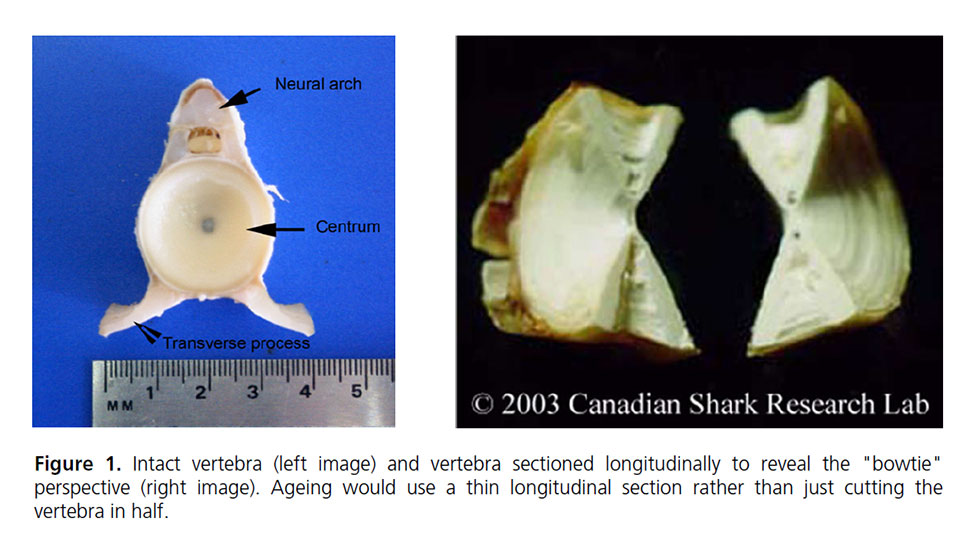
Figure 1 from FAO “Age determination of elasmobranchs with special reference to mediterranean species: a technical manual” Source for more info: https://www.fao.org/gfcm/publications/studies-reviews/94/fr/
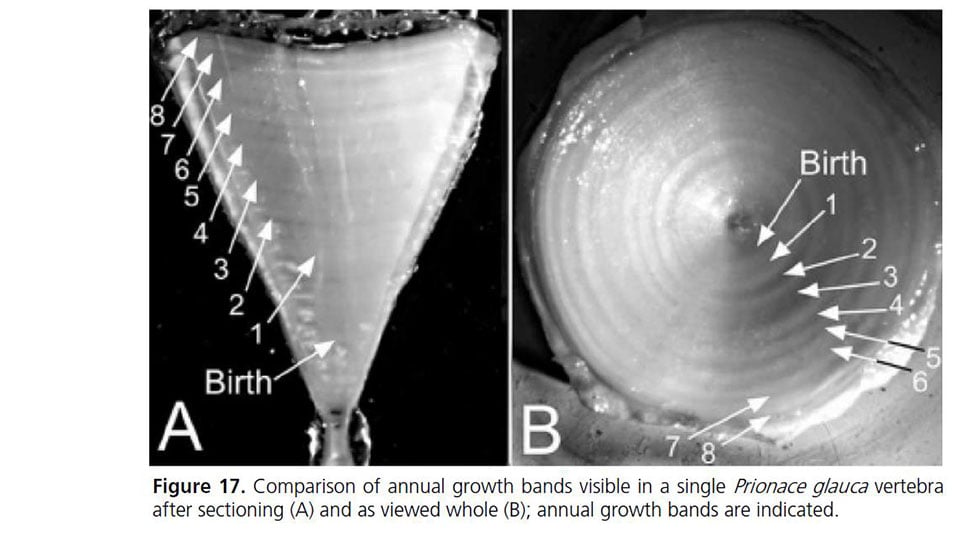
Figure 2 from FAO “Age determination of elasmobranchs with special reference to mediterranean species: a technical manual” Source for more info: https://www.fao.org/gfcm/publications/studies-reviews/94/fr/
When enough shark vertebrae are dissected and the size of the shark is measured, we end up with large tables used to link the age with the size. From these we can then tell within a reasonable range, how old a shark is, based on its length.

Table 3 - Estimates of the total length at age in the blue shark, Prionace glauca, from vertebral band studies by location and sex. From the article: Megalofonou, Persefoni, Dimitris Damalas, and Gregorio De Metrio. "Biological characteristics of blue shark, Prionace glauca, in the Mediterranean Sea." Journal of the Marine Biological Association of the United Kingdom 89.6 (2009): 1233-1242.
Now, when it comes to white sharks, things get more complicated. Most sharks are homeotherms, which means that their bodies don’t have the capacity to warm up, like we do, and have the same temperature of the water - but this is not the case for white sharks. And this complicates the measuring process.
White sharks are able to warm up their eyes, brain and stomach from 8°C to 15°C higher than the water temperature. This incredible system is called rete mirabilia (and will be the subject of another article). The effect of this system is that when a white shark swims in warmer water, it will grow faster than when in colder water; the process of keeping part of its body warm will reduce its growth rate, complicating the constant growth of rings in their vertebra.
But once we have the age/length of the shark tables, how are we going to measure the sharks?
Of course, it is a lot easier when the sharks are dead and the measurement is taken on land. For this, there are two main measures that are taken – the nose-to-tail in natural position (or total length – TL) and the nose-to-attachment of the tail measurement (or pre-caudal length - PCL).
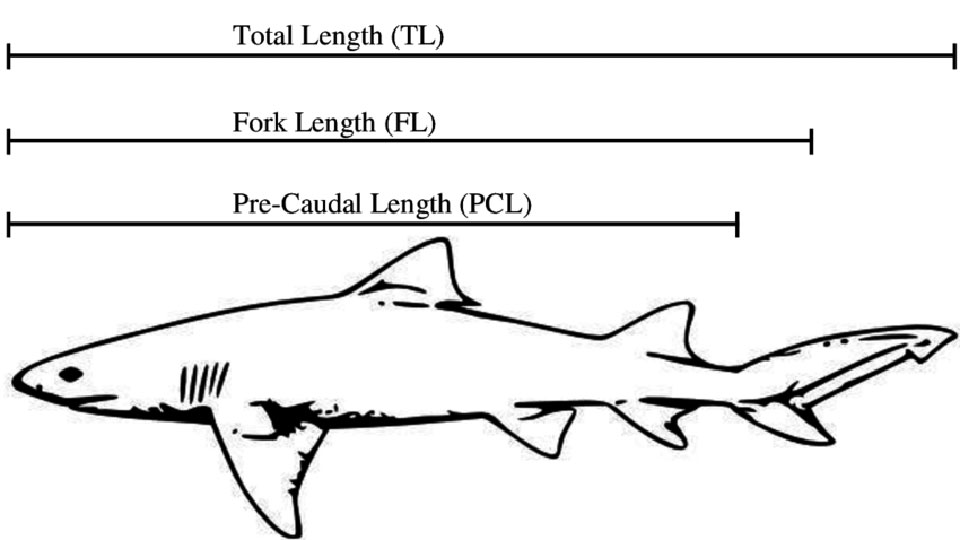
Figure 3 Length measurements taken during shark processing Example shark = N. brevirostris From: Kessel, Steven T. Investigation into the behaviour and population dynamics of the lemon shark (Negaprion brevirostris). Cardiff University (United Kingdom), 2010.
But when the sharks are still happily swimming, the measuring process is more challenging than you think. The most common method is to estimate the length of a shark when it is swimming close to a known-size object. This technique works best when the observers are experts, and when this estimate is done by more than one person. As an example, the length of white sharks is often estimated when they swim next to a cage of known length, during shark cage diving activities.
Figure 4 – white shark cage diving in Gansbaai ca 2013 - Photo Credit: © Shark Diving Unlimited
Another (and much more exciting – for us) system to estimate the length of sharks is by using laser beams mounted on a camera.
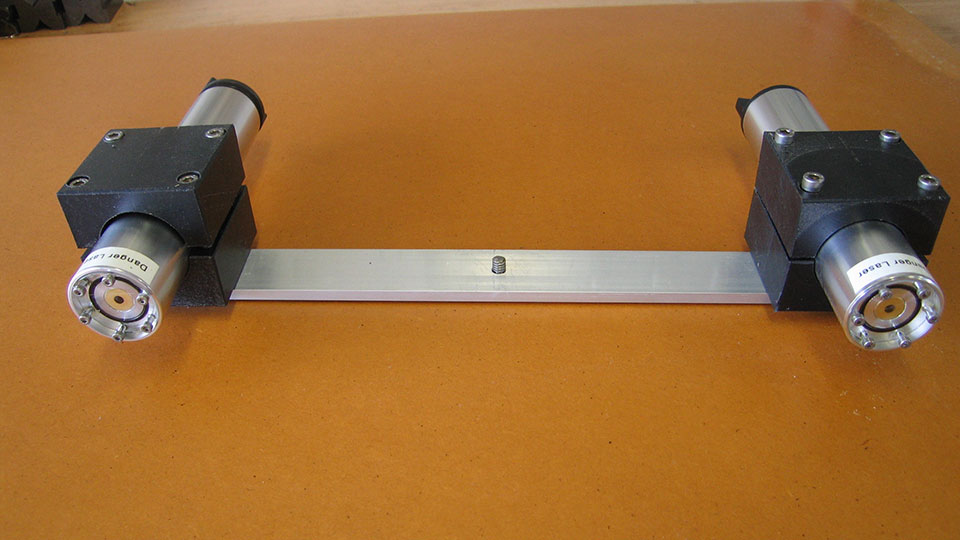

Figure 5 - On the left: laser beams and on the right: example of photo analyses from: Leurs, G., et al. "Risks and advantages of using surface laser photogrammetry on free‐ranging marine organisms: a case study on white sharks Carcharodon carcharias." Journal of fish biology 86.6 (2015): 1713-1728.
This is a non-invasive system that consists of taking a picture of the shark while it is swimming in front of the camera, with two parallel laser beams projected on its body. The distance of the two beams is consistently 30cm, regardless of the distance of the shark, making it possible to measure the total length of the shark from the photo.
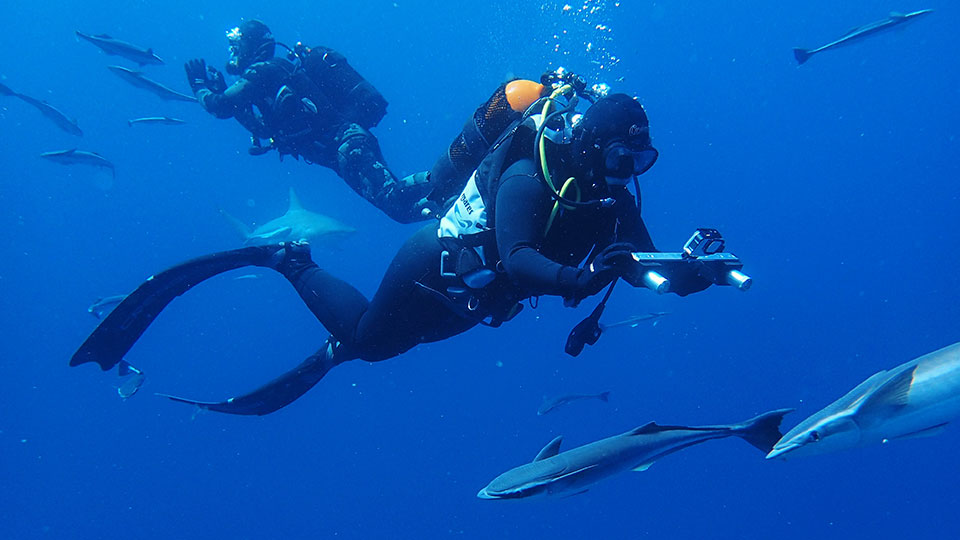
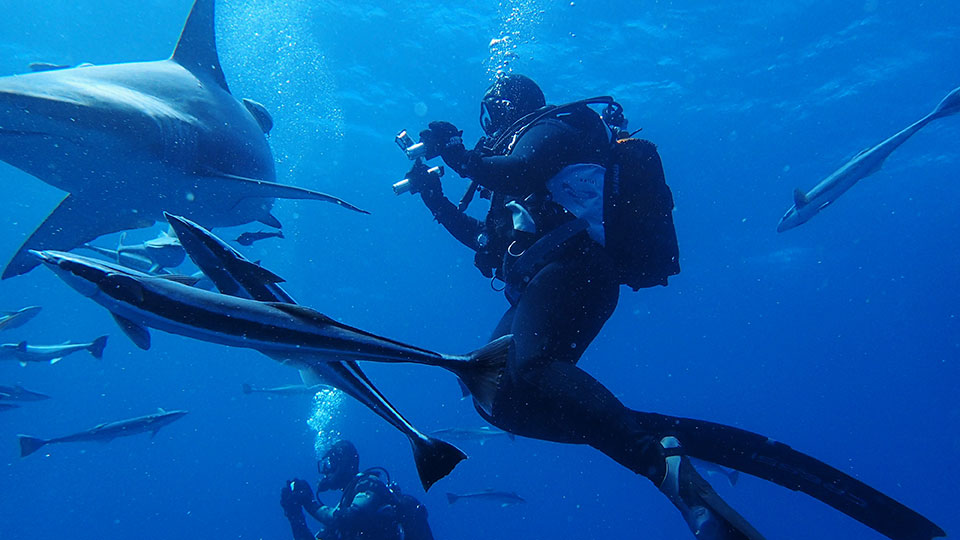
Figure 6 - Sara measuring oceanic blacktip sharks in Umkomaas as part of the shark research projects supported by Adventure Ally and African Watersport logistics, and thanks to the camera sponsored by SHARKPROJECT Austria.
The fun and challenging part of this work is to make sure that the shark is perfectly perpendicular to the laser beams, with the two “green dots” visible on its body, without pointing them towards their eyes and also with the full animal captured in the photo-frame.
The trick for this is to get as many images as we possibly can, so that we can then extract a reasonable average size from them. This system will never be as accurate as taking the sharks out of the water, but it is surely a better system than the visual estimate, and much less stressful for these magnificent creatures, that can just keep on swimming around, unaware of our work.
Of course, our ultimate goal is the creation of a stress-free environment for sharks to co-exist in harmony with humans, and flourish, in order to maintain the delicate -----balance of life on earth.
























































































































































































































































Validate your login